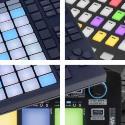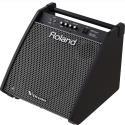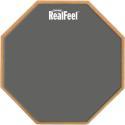What are 808s? - Bass, Kicks & Beats
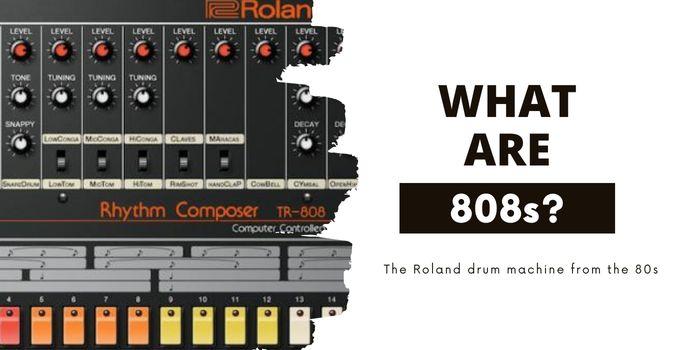
What are 808s? This is a term you'll hear often in music production. Even casual listeners who have no idea of the history are aware of 808s — they're heavily featured in hip-hop lyrics. Kanye West named an entire album after the sound!
808s come from the Roland TR-808, an old-school analogue drum machine. Known for creating an idiosyncratic bass line, the 808 was initially unpopular on release. But the unusual (and low-budget) machine soon found an audience. Nowadays, it's impossible to escape the influence of 808s.
Still used in popular music, 808 sample packs are easy to find and manipulate. This allows contemporary music producers to take advantage of the retro sound in their own tracks. Discover more about 808s, including how to use them and where you might hear them, with this guide.
What Are 808s In music?
The 808 beat is a speaker-shaking sub bass that can be heard across modern music. With a hefty punch at the low end of the spectrum, 808 beats are instantly recognizable. They're also easy to tune to different pitches. That's part of the reason why the 808 beat is so popular.
808s originated with drum machines. Although they weren't hugely popular when first released, the obviously synthetic sound soon took off. Over time, the term 808 came to describe a specific style of booming synth bass frequencies that's very popular with hip-hop production.
A Brief History of The Drum Machine
Early versions of the electronic drum machine were pretty simple. They played pre-set patterns, often recorded from real life. Over time, they slowly evolved to give the user more control.
By the 1970s, the drum machine was becoming a little more prominent. Sly & the Family Stone had the first #1 pop song featuring a drum machine in 1971. From there, they became more common.
In 1972, programmable drum machines were released. These gave the user significantly greater control. You could create and record your own patterns from pre-set rhythms.
One of the most popular machines was the Linn LM-1. Expensive but with higher fidelity, it was a top choice for many producers.
But while the sound of the Linn LM-1 was incredible, the price was off-putting. This brings us to the release of the Roland TR-808, the eponymous source of 808s.
The Roland TR-808 Drum Machine
Released in 1980, the Roland TR-808 Rhythm Composer was a programmable drum machine. Musicians could create their own rhythms and patterns instead of relying on the machine. And it had numerous audio outputs that made it easy to integrate into different stage and recording setups.
But what really set the TR 808 drum machine apart was its use of analog sounds. Generated using hardware rather than samples, the TR-808 sounded noticeably different from traditional drums. It was obvious you weren't listening to live drums.
Nowadays, this is the major charm of the 808 beats. But at the time, electronic music was yet to take off. The strange sound of the 808 rhythm machine got mixed reviews. Roland discontinued the machine after just a few years of production.
However, before being pulled, the 808 was responsible for two 80s hits. Both Sexual Healing by Marvin Gaye and Planet Rock by Afrika Bambaataa & Soulsonic Force use 808 beats. Of course, this gave way to plenty more hit records using the sound.
808s, Hip-Hop, And Electronic Music
While the 808 might have gotten off to a slow start, it did find an audience. The TR-808 was significantly less expensive than the digital samples of its competitor, the Linn LM-1. Underground producers picked the budget TR-808.
With the 808 backing some of the biggest underground hip-hop and rap artists, it was poised for the mainstream. Artists like Public Enemy and Run-DMC helped launch 808 Beats. Soon, everyone was taking notice.
Meanwhile, in the UK, New Wave was giving way to the rave scene. Bands like 808 Slate (who took their name from the 808) helped popularize the bass in dance music.
The expensive drum machine fell out of popularity as samples and DAW software became accessible. But the influence of the 808 lived on. If you wanted to capture a certain retro beat, you'd turn to 808s.
808s As The Kick Drum And Bass Drum
Originally, the term 808 represented the entirety of what the Roland TR-808 produced. But over the years, the meaning has morphed and been specified. Nowadays, the term generally describes the 808 bass drum, where the kick hits hard and deep.
It's not a set term. If you use 808 to describe the hi-hats or snare drums on the track, people will know what you mean. But primarily, when people think of 808s, they're thinking of bass to shake club walls.
This association with a strong beat has made the 808 easily recognizable. 808s are often referred to as heartbeats in both lyrics and sound design. It's part of the reason the Roland TR-808 has better brand recognition than any other drum machine.
Creating Your Own 808 Beats
The original TR-808 has become a collector's item. If you want to get your hands on one, you'll need to shell out several thousand dollars for a vintage drum machine. Luckily, there are cheaper ways to achieve that sought-after sound.
Search The Internet For A Sample
The first thing you need is an 808 sample to work with. These often come pre-set in your DAW, but you can find them online as well. 808 samples are all over the internet.
The best way to get virtual 808 sounds is to get them from the source. Roland has a software version of the TR-808, which can be used with modern DAW.
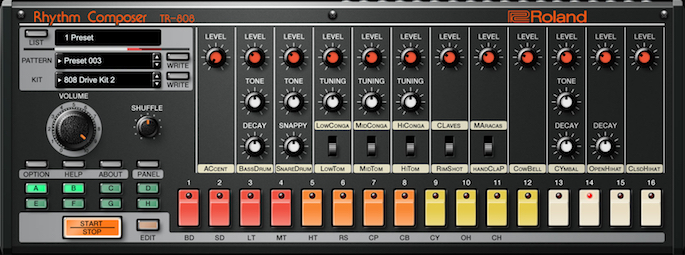
You have a lot of options, so try out a few to find what works with your style. If you've got part of the track in place, experiment with a few 808 manipulations.
For drummers, most electronic drums and electronic drum pads have 808 drum samples built-into them.
Get Tuning
One of the reasons for the popularity of the 808 beat is that it's easy to tune. So, you really can't neglect this step. If you have an out-of-tune 808, it will immediately disrupt the track.
808s oscillate at a certain pitch. You can adjust that pitch to suit your needs. Try the 808 in a sampler that allows you to play it up and down.
EQ 808s To The Bottom
808s are all about the sub-bass. They should be right at the bottom of your mix. To give them the power and impact the beat needs, you'll need to EQ other low frequencies.
If you're using a kick drum or synth bass, EQ the low frequency range so the 808 has the bottom of the mix to itself. This also means that you're better off with a subwoofer, or a drum amplifier that have good low end. Your EQ settings for the 808 should compliment the drum EQ.
Boost Attack Time
An increased attack time delays the peak of the 808, giving more room to the kick. Then, a gradual swell of the sub-frequencies comes into play.
But play around with the attack time, adjusting decay and release to find what works for your track.
Clean Up The Low End
You want to clear away anything else that might be sitting in low-end frequencies. This will give your 808 the space that it needs to really rattle the walls.
Clearing up the low end can ensure that the impact of the 808 can be heard even through poor-quality speakers.
Why Are 808 Beats So Popular?
The heavy bass sound of the 808 beat has become a cornerstone of hip-hop culture and electronic music. Music producers today still choose the 808 over modern drum machines. But what made the 808 so iconic?
For a start, the 808 was affordable. Producers in the 80s choose to save money with the 808. The sound became associated with underground music culture. It had an authenticity to it, a low-budget style that was perfect for nightclubs.
Against sleek mainstream 80s culture, the discordant 808 beat stood out. It didn't resemble real percussion, nor did it sound like a high-quality studio production.
Instead, it had a different vibe and felt alive. Just what was needed in the rave scene and hip-hop productions. 808s soon had a cult following.
Another advantage of the 808 beat was that incredible sub-bass. It has a dark and intense percussive sound, with plenty of rattle. This Roland gear began the iconic sound fitted with the mood of 90s rappers.
In addition to the natural intensity and punchy sound of the 808 beat, it was easy to fine tune. They could be tuned and compressed, distorted and manipulated. With the 808, you could ramp up that sub-bass to create the perfect backing for your track.
As the cult popularity of the drum machine grew, it caught the attention of the mainstream. This new sound was pretty much everywhere, and more importantly, it sounded great.
Nowadays, there's a retro style to the 808 that has made it an even more iconic sound. Producers who want to capture the basement magic of 90s rap turn to the drum machine. And because the 808 is so adaptable, you can still make it your own.
Because of its popularity among electronic music and hip hop producers, Roland has incorporated elements of the 808 into a DJ controller in the Roland DJ-808.

From Planet Rock to Britney Spears, the 808 gets around. Let's take a look at some songs that use 808 beats.
Sexual Healing by Marvin Gaye
One of the most iconic songs that uses the 808 beat is Marvin Gay's Sexual Healing. Coming not long after he cut ties with Motown, this song was a fresh revolution.
The idiosyncratic sounds of the 808 felt completely new in 1982. The unique tone of the analog synthesis blended with the smoothness of the other instruments. It sounded like a completely modern production, and since you cannot overstate the impact of tone in music, the 808 gained more popularity. But the reason Marvin Gaye chose the 808 wasn't entirely because of the sound design possibilities. He liked it because he could use it by himself. There was no need for session musicians and other producers.
Marvin Gaye prefering his solitude, might have led to one of the most iconic sounds in popular music. The world began to take notice of the drum machine.
Paul Revere by Beastie Boys
Innovative producers and musicians quickly discovered that electronic instruments like the 808 were a playground. You could really manipulate the sounds to create something unique. It was this versatility that the Beastie Boys took advantage of in 1986.
License to Ill features 808 beats frequently, in new forms and distortions. One of the most iconic presentations is Paul Revere.
The beat is recorded, flipped, and reversed. Sounding completely fake and nothing like a real drum. It's the thumping spine of the track.
I Wanna Dance With Somebody (Who Loves Me) by Whitney Houston
Whitney Houston's massive 1987 hit I Wanna Dance With Somebody uses the 808 extensively. The synthetic sound helped add to the funky feel of the iconic track.
It could stand up to the power of Houston's vocals. The track went on to win the Grammy for Best Female Pop Vocal Performance.
By the late 80s, drum machines had become commonplace. The thumping bass frequencies of 808s dominated the airwaves. It was no longer the secret of underground musicians.
Psycho Killer by Talking Heads
You won't hear the 808 beat on the original recording of Psycho Killer, but it does appear in covers and live versions. Played like gunshots, this explores just how evocative the 808 beat can be.
808s & Heartbreak by Kanye West
Not a song but an entire album! Kanye West featured the iconic sounds of the 808 in every track on his 2008 album 808s & Heartbreak.
It's easy to hear the influence of the 808 on the album (which takes its name from the sound). It's sparser and emptier than previous records by Kanye West. The thump of the 808 is given space to breathe.
Frequently Asked Questions
Is 808 Just Bass?
808 originally referred to all sounds created by the TR-808 machine, including the kick drum, snare, and tom. But nowadays, 808 tends to mean the combination of bass and kick.
What Is An 808 In Hip-Hop Music?
808 can be used to describe the heavy and synthetic sub-bass often found in hip-hop productions. But 808 is also used as slang for a heartbeat, thanks to its steady thump. So, you have to consider the context.
To dive in deeper into the world of synthetic music you should understand just what is a synth.
Conclusion
From 80s hip-hop to modern-day pop music, 808s are almost inescapable. The powerful bass drum sound is used to form a strong base for intense tracks.
Some of the most popular songs of the past few decades have relied on 808s. They're still popular today, giving retro magic to electronic and hip-hop records. But instead of hardware 808s, many are using software emulation like the official Roland Software Rhythm Composer.
I hope the information here has cleared up the "What are 808s" question. Go ahead and experiment with the iconic 808 beat and see what it can do for your music.



